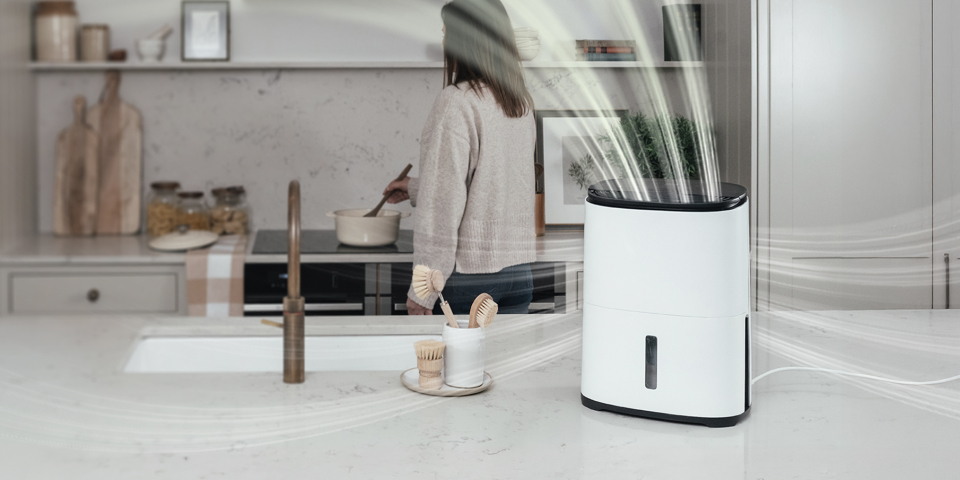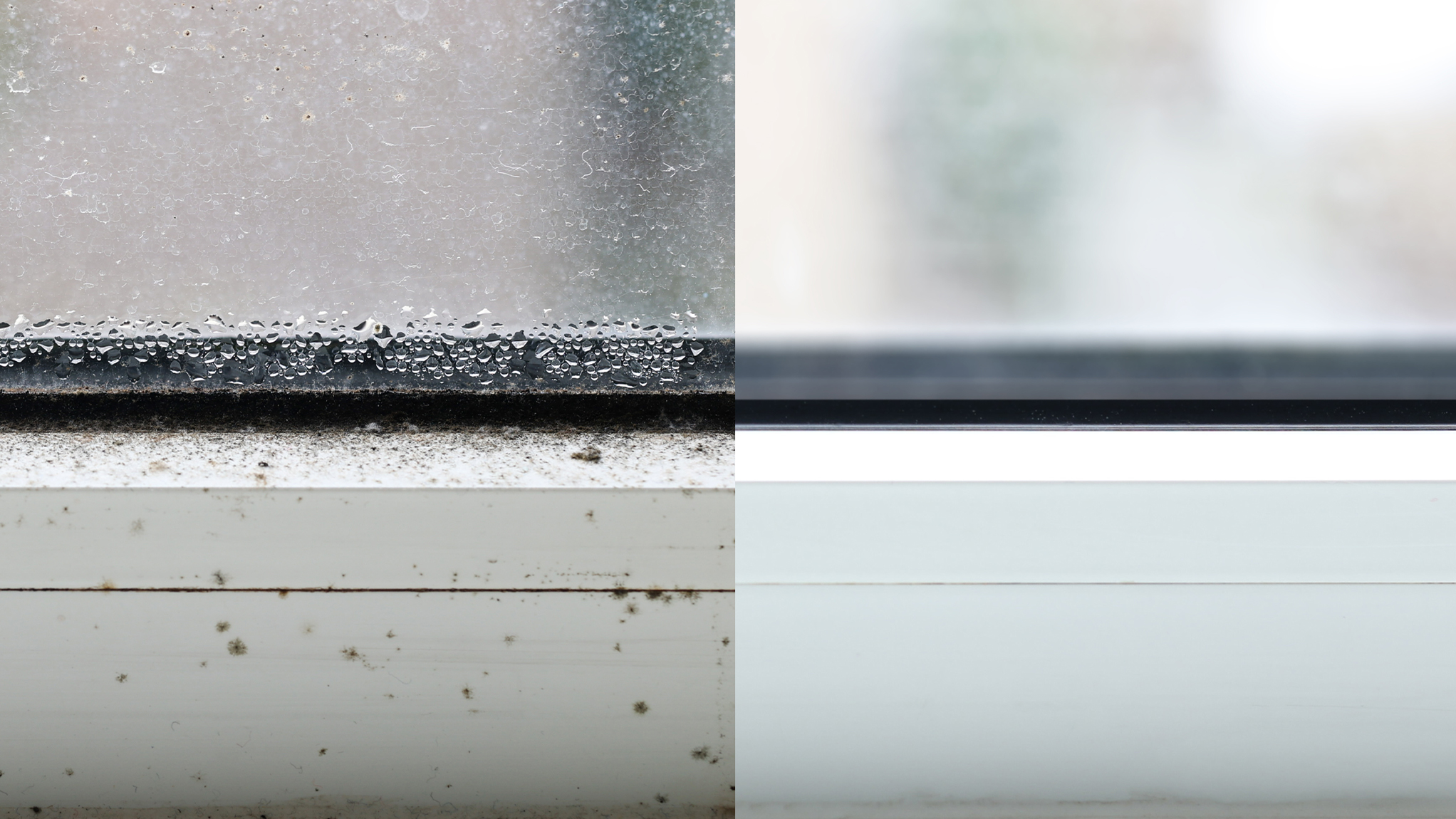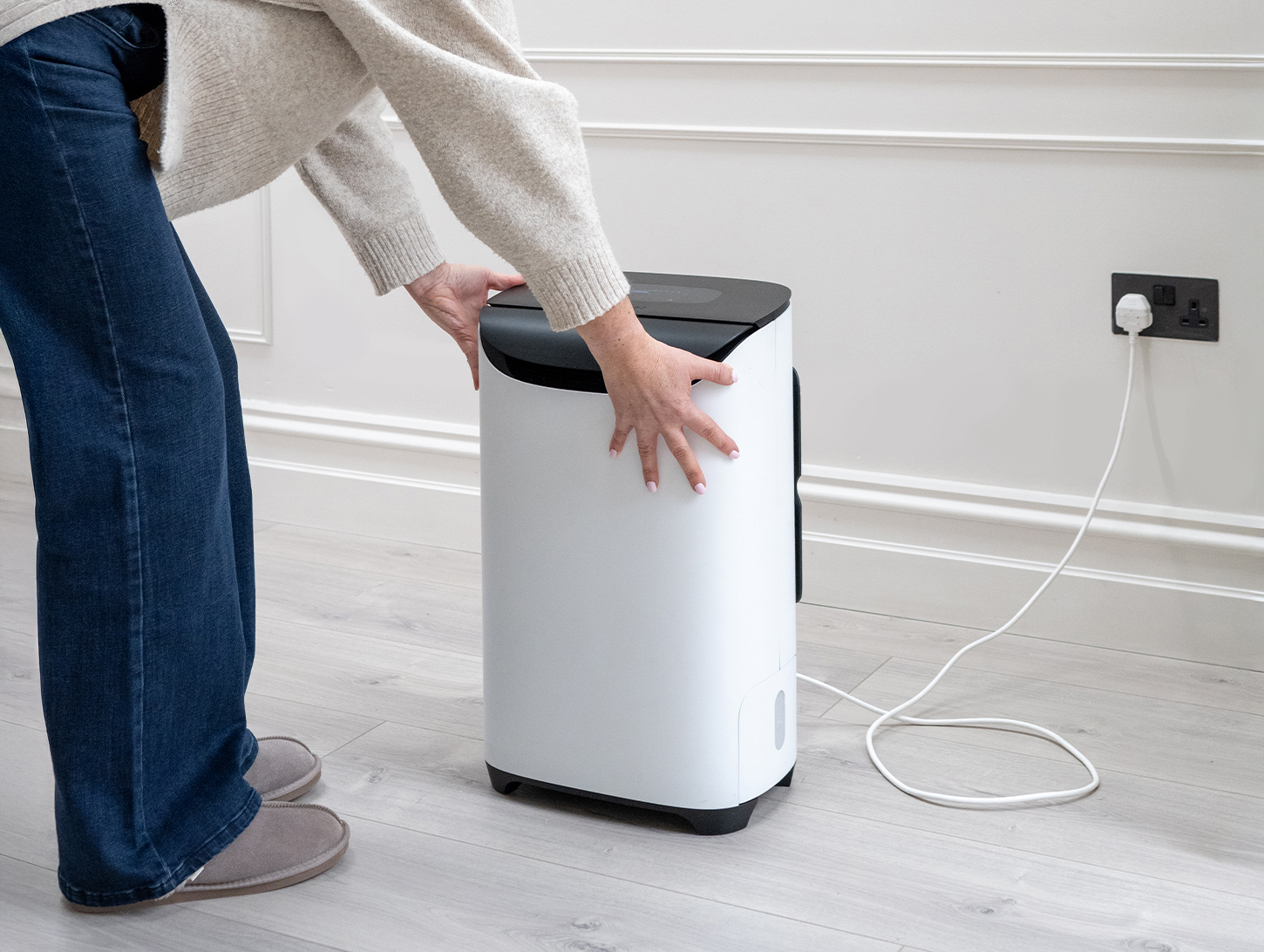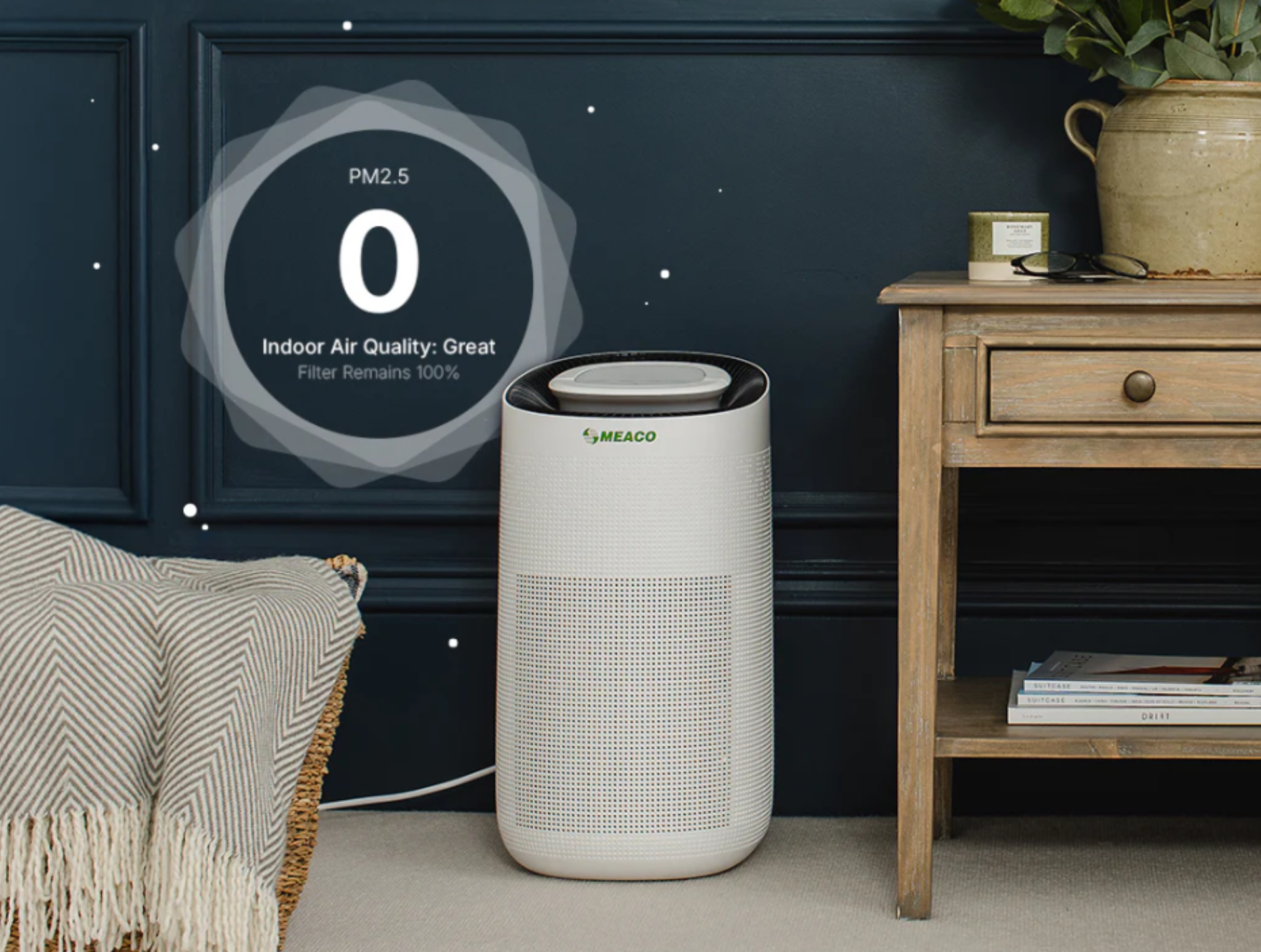
There is growing evidence and a wider public understanding of how indoor air pollution can have a negative effect on a family’s health. We’re more aware than ever of what’s floating around in our home environment. From allergens drifting in through open windows to indoor irritants like dust mites, mould spores, and even air pollution—it all adds up.
So, more and more of us are turning to air purifiers to create cleaner, healthier homes. In many ways, air purifiers are becoming an essential part of home wellness.
But which one is the best one for you? How do you choose?
With so many models and features out there, it can seem a little overwhelming! Our health and wellness is so important. So, too, is choosing which air purifier you need to ensure it’s offering maximum impact and purification when you need it. So, which air purifier is best for you? What kind of filter do you need? What size do you need for your room? Will it actually make a difference?
This expert guide is here to answer all those questions—and more. We’ll walk you through the key things to consider when choosing an air purifier, depending on your personal needs, room size, and specific concerns like hay fever, dust, pet dander, or city pollution. You’ll also find product recommendations, handy tips, and straightforward advice to help you make the best choice for your home.
Ready to breathe easier? Let’s get started.
Why should I buy an air purifier?
There is one reason you’ll be looking at an air purifier: you are concerned about your home air quality. Air quality concerns can fall into three main categories:
- The most common reason is allergies. You experience allergies to either pet dander, dust, hayfever or other, and you’re looking for cleaner air in your home to alleviate symptoms.
- You are concerned about VOCs (volatile organic compounds). These are your airborne nasties and are commonly found in: cleaning products, scented candles, building materials, tobacco smoke and fuel. You are looking to reduce bad smells around the home. This could be strong cooking smells from the kitchen clinging to furniture and lingering.

Why buy an air purifier: Hay fever and other allergies
Spring and summer may not last long in the UK weather wise, but for many of us it feels like forever thanks to high pollen levels! Unfortunately, one of the most common allergies in the UK is hay fever. Hay fever can be unbearable for lots of people, making their spring and summer months miserable.
With windows and doors open more often, washing dried outside on the line and pollen sticking to our hair, many people allow pollen into their home without realising it – meaning they get no relief from their symptoms. If you suffer from hay fever and are looking for ways to prevent your symptoms, read our blog: 5 ways to reduce hay fever symptoms at home.
Family pets can also trigger allergic reactions from their dander. While we love our pets like family, their presence in the home can impact those who are sensitive to pet allergens. It’s not just about the hair they shed; the real culprit is often pet dander – tiny, sometimes invisible flakes of skin that animals naturally shed. These particles become airborne and settle into carpets, furniture, bedding, and other soft surfaces, making them difficult to remove through cleaning alone.
In addition to dander, proteins found in pet saliva, urine, and even sweat can become airborne and contribute to allergic reactions. When pets groom themselves, these proteins can stick to their fur and eventually flake off into the air, triggering symptoms such as sneezing, itchy eyes, congestion, and skin irritation.
Finally, let’s talk about dust. It’s everywhere!
It’s estimated that the average UK home creates a mammoth 18kg of dust a year! For many people, dust can be a problem as it triggers allergies and can even aggravate conditions like asthma.
If you have a dust allergy specifically, it’s the dust mites you’re likely allergic to. My managing the level of dust in your home, you can manage the mite population and therefore your symptoms with an air purifier.
Read more: Breathe easy: how can an air purifier help with dust?
Of course, there are other allergies we’ve not touched on. Any allergy related to an airborne particle can be managed by an air purifier.
Why buy an air purifier: Pollution
Pollution is most obvious in large cities, along busy roads and in industrial areas. There are also many sources of pollutants that we bring into our own home. These include smoking, faulty boilers, chemicals that are given off by new furniture, perfumes, air fresheners, paints and cleaning products.
They also include things that you might not have considered, such as the dust mites that live in your bed and soft furnishings; and mould spores that are often the result of condensation and damp.
All these issues can reduce air quality in your home and that can trigger allergies and wider health problems.
For more information, read our blog: Fighting air pollution in your home
Air purifiers provide a solution that can provide relief from these problems in your home, at an affordable cost. Of particular benefit is using an air purifier in your bedroom to ensure a good night’s sleep. If you work from home or are studying for exams, an air purifier can help you work more efficiently and effectively, and with a clearer head. More importantly, if you have someone in your household who already suffers from allergies or breathing problems, poor air quality can exacerbate them.
To get the most from your air purifier it is vital that you select the right model, which is why we’ve put together this useful guide.
Which air purifier is best? Which one to buy? A guide
1. Match your allergy (and it’s severity) to the air purifier filter
Air purifiers are often designed to remove specific allergens from the air in your home. Think about what you want to remove from the air and then match that to the air purifier’s filters.
For example, a HEPA filter is excellent at removing particles from the air like dust, pet dander and smoke particles. But to remove smells, you need a charcoal filter, and to destroy bacteria you need an ultra violet system (UVC). Here are some simple questions to help you sort out what your primary issue might be:
- Do you need to get rid of the smell of tobacco or cigarette smoke?
- Does someone in your house have an allergy that’s caused by your pet?
- Do you or someone in your family suffer from seasonal allergies like hay fever?
- Have you had a lot of building work and need to get rid of dust and fumes?
- Do you just want to improve your general air quality
The CADR rating is available for most air purifiers. For our MeacoClean 47×5 Air Purifier, we have created this handy breakdown for smoke, dust and pollen.

2. Match Your Room Size To The Air Purifier’s Air Flow
This is one of the biggest questions: which air purifier do I need for my room size?
Most people try to save money by buying a cheaper air purifier to ‘give it a go’ and end up with an air purifier that is too small for the room that they need to clean and therefore ineffective. Then they have to invest more money in a new air purifier. It’s always best to do your research, get some expert advice and invest in the best and the most appropriate air purifier for your needs.
Generally speaking, the larger your room, the larger, more powerful air purifier you’ll need. You’ll want to look at the number of air changes the air purifier can offer in your room. If you have a severe allergy or air quality concern, look for a higher number. You’ll want at least 6 air changes an hour. If you’re positioning the air purifier in a large living room, you’ll need our MeacoClean 76×5 Air Purifier, and maybe even to run two in the same room if your allergy is very severe.
If you’re in a smaller room, you may be able to get away with a compact unit. We always recommend checking the details so you get the unit that best serves your needs.
It’s important to get an air purifier that can handle the size of room you need to improve and alleviate allergies in. You may only smoke in the living room, in which case you’ll need an air purifier to target this room. Or, you experience hayfever and just want a good night’s sleep! You’ll be looking for an air purifier to run in the bedroom.
The easiest way to do this is to simply measure the length, width and height of your room: let’s say 5m by 5m. Multiply these together to give you the cubic air volume of the room: 25m3.
The air purifiers you look at should give an indication of the space they can handle. We recommend looking at the air changes per hour.
The MeacoClean 47×5 Air Purifier can offer 8 air changes an hour in a room of this size (25m3). This would be suitable for many allergies.
Let’s take a look at another room, a larger room. Let’s say this room is 10m by 8m, so we’re looking at 80m3. Our MeacoClean 47×5 Air Purifier can only offer 3-4 air changes per hour in this room. For some people with severe allergies, that’s not enough.
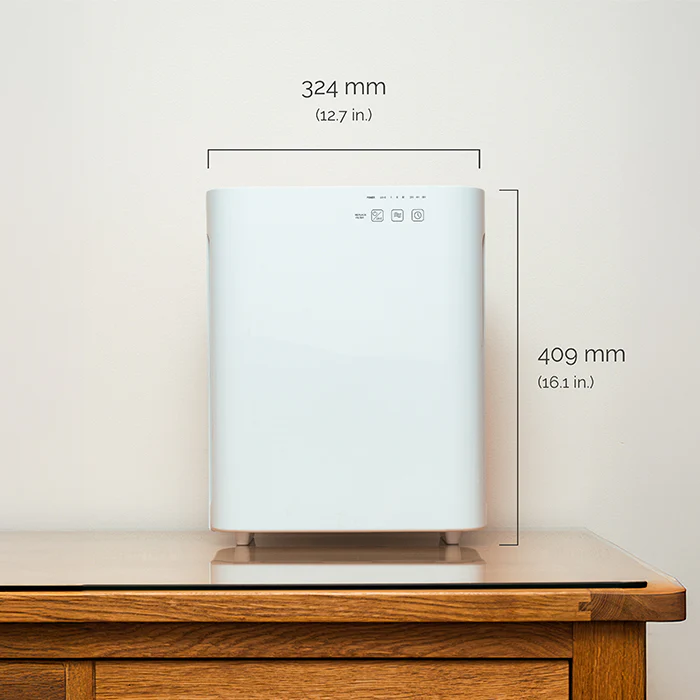
For this sized room, we would recommend choosing a MeacoClean 76×5 Air Purifier. Perhaps, even running two at a time. This will double the air changes for maximum air purification to your home and family.
To keep things simple, we have created this handy chart to show the differences in room size, how many air changes you need based on your allergy and which air purifier(s) you should consider.
If you have a MILD allergy, you could look at smaller, more compact air purifiers. Much like the MeacoClean 47×5 Air Purifier – it can provide multiple air changes in smaller rooms.
If you have a MODERATE allergy, you should consider a medium sized air purifier. Even in smaller rooms. Something like our MeacoClean 76×5 Air Purifier will offer you a high performance.
If you have a SEVERE allergy, you should consider running a powerful air purifier in a smaller room for maximum air purification. Alternatively, you may run multiple air purifiers if you want to clean a large room and manage your symptoms.
So, using our tables above, find your number and match it with the air flow of the air purifiers you’re considering.
Let’s narrow down air changes by hour, what things should you bear in mind?
3. Air purifiers – The Factor Of 3 air changes
You should be able to divide your room size into the air purifier’s air flow at least three times, making sure that you match cubic metres with cubic metres and feet with feet.
This will mean that the air in the room is being cleaned three times an hour.
If you or someone in your family suffer from particularly bad allergies, we’d recommend that you look at a purifier that can clean the air up to five times per hour – and if the condition is severe then use a factor of seven.
The more severe your allergies or air quality concern, the more times you’ll need the air cleaned. Use the tables above to decide which air purifier is best for your room and your allergies.
On the chart, we’ve labelled these with the lightbulb icon, “5 air changes per hour” is a factor of 5, as an example.
4. Let the air purifier do its job
Let the air purifier run 24 hours a day, 7 days a week. In the room it’s operating in, close windows and doors, this will prevent more allergens and particles entering the space. Put it on high fan speed when you are not in the room and turn it down to one of the quieter fan speeds when you are in the room if you wish. The more often the air passes over the filter the cleaner the air will become.
For more tips on maximising your air purifier to manage hay fever, visit our blog: 5 ways to reduce hay fever symptoms at home
How our air purifiers can help you
Our air purifiers have been designed to help you significantly improve the air quality in your home. We use a multi-stage cleaning system where the room air first moves across the pre-filter to remove larger particles such as dust.
The HEPA filter removes smaller allergens, then the charcoal filter removes smells and volatile organic compounds (VOCs) from the air before finally, the ultraviolet light works in conjunction with the photocatalyst titanium dioxide coating to remove bacteria and viruses from the air.
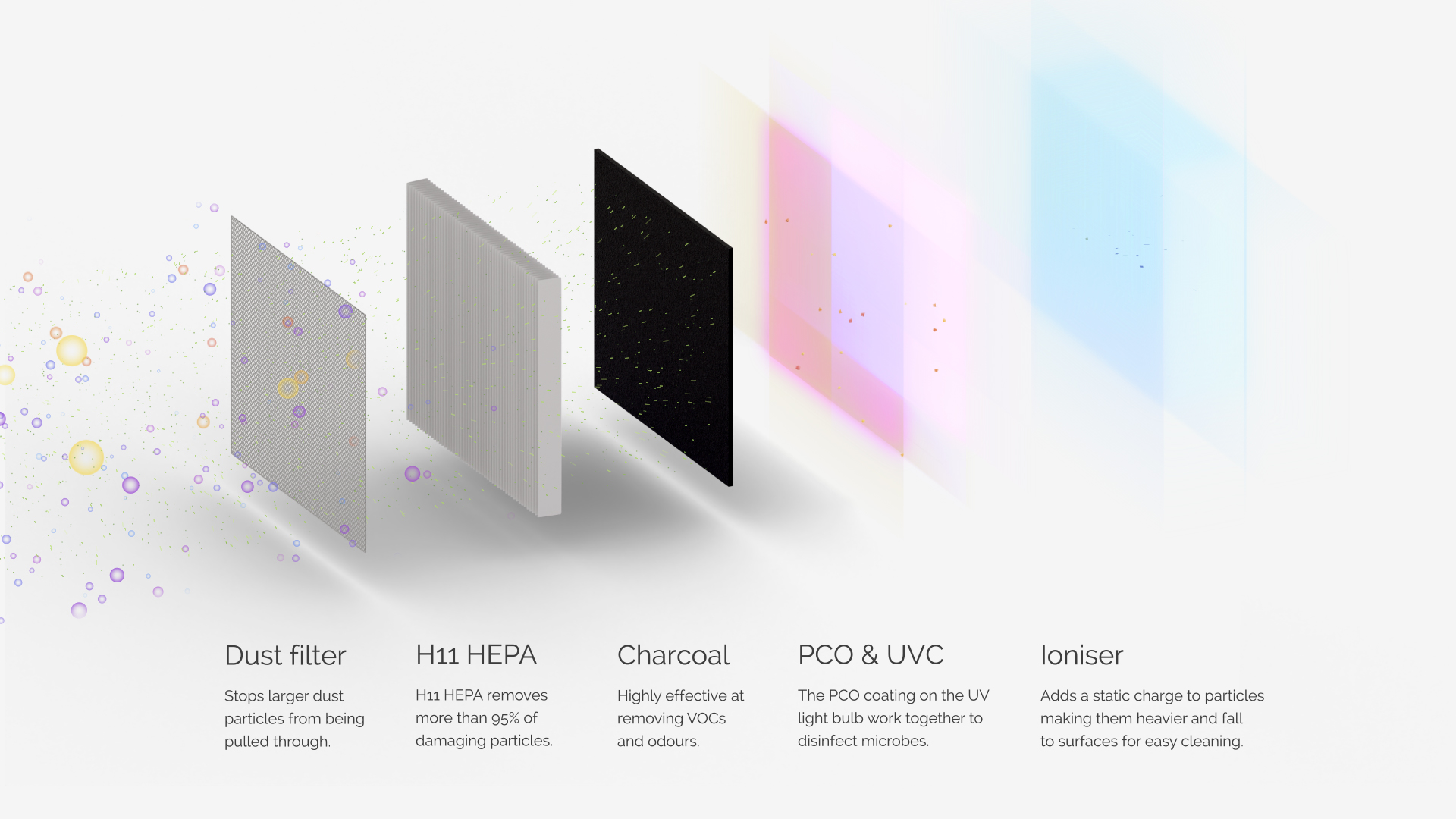
For a more detailed approach to how an air purifier actually works and the layers of filters, visit What does an air purifier do, and how do they work?
There is a lot of information here. If you are managing a tricky allergy and want support in choosing which air purifier is best for you, email our team at customerservice@meaco.com or call us on 01483 234900 for help and advice.


